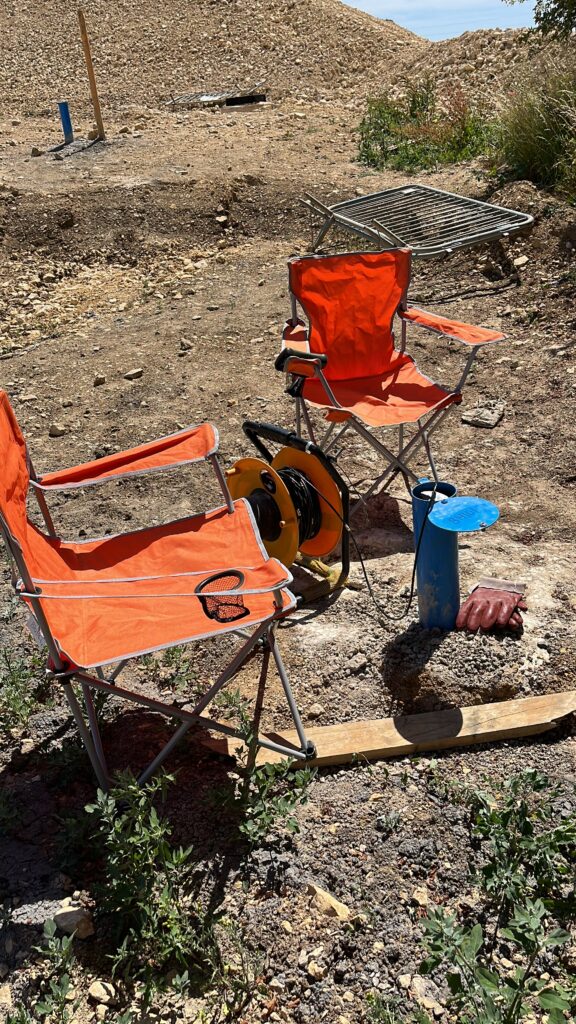
At the beginning of 2020, COVID-19 (Coronavirus) emerged as a global scale pandemic which has fundamentally affected how we live and work. In response to the growing scale of the virus, the United Kingdom announced a series of nationwide lockdowns starting in March 2020, requiring people to stay at home and for all non-essential work activities and travel to cease.
As a result of this national lockdown, almost all construction and investigation projects were forced to stop work until new safe systems of work could be agreed and implemented. As part of this, many construction related operatives were placed on furlough.
The Association of Geotechnical and Geoenvironmental Specialists (AGS) formed the Instrumentation and Monitoring Working Group (I&MWG) in 2020, which has had to operate within the limitations of the COVID-19 safety measures from its inception, meeting almost exclusively via Microsoft Teams until recently. The group works to promote geotechnical, structural and environmental instrumentation and monitoring (I&M) to the geotechnical, geoenvironmental and wider engineering community. This report aims to highlight in brief the immediate and long-term impacts of the COVID-19 pandemic on Instrumentation and Monitoring projects within the United Kingdom.
Immediate impacts of the COVID-19 pandemic on I&M projects and ground investigation.
As with most construction related industries, the ground investigation and I&M industry ceased most non-essential activities upon the announcement of the national lockdown in March 2020. The only exception to this being where projects were classed as being of national importance, examples of this including works on key infrastructure such as utilities (water, power etc.), or where safety-critical works were being carried out. In these circumstances, site operatives were classified as “Key Workers” and therefore were able to work around the lockdown rules for work purposes only.
Following guidance issued by the Construction Leadership Council (CLC) and key industry stakeholders outlining new safe working procedures to carry out site operations, ground investigation and long-term monitoring projects were able to recommence on a larger scale by June/July 2020.
During the initial lockdown period, it was reported that most geotechnical/structural instrumentation and monitoring was largely unaffected by the pandemic lockdown measures, due mostly to monitoring technicians being able to “Lone Work” meaning that social distancing measures could be adhered to. Some individuals anecdotally remarked that monitoring became easier and more efficient due to the decreased levels of traffic on the roads as a result of the lockdown and “Working From Home” initiatives.
It was noted that there were some initial minor issues for existing long-term I&M projects regarding the delivery of monitoring data at the contractually pre-agreed frequencies/intervals, as a result of the disruption in the monitoring programmes caused by the lockdown measures. However, once the uncertainty of the initial lockdown period had passed and safe systems of work were in place allowing wide-scale construction related activities to recommence, it was noted that these issues were quickly resolved.
Sales of I&M equipment were noted to slow slightly in the first months of the national lockdown measures, however this was to be expected due to the temporary cessation of on-site activities and uncertainty surrounding the speed at which construction projects could recommence. Short term disruption to the supply of I&M equipment was also noted, caused by the initial lockdown measures interfering with the logistics network.
Long term impacts of the COVID-19 pandemic on I&M projects and ground investigation
In general it is apparent that there have not been any significant long-term impacts of the COVID-19 pandemic on I&M projects. Once construction and ground investigation activities could recommence, with the new safe systems of work in place, instrumentation and monitoring was able to continue mostly unaffected.
It was noted that there was some increased interest in the implementation of automated monitoring systems for larger I&M projects, however, it is unclear whether this could be directly attributed to the COVID-19 pandemic. It was suggested by one leading I&M manufacturer/distributor that there was a general increase in interest towards automated monitoring prior to the pandemic, which suggests that the industry is naturally shifting towards more automation as the technology improves and becomes more readily available.
Some issues have been identified with the supply network for I&M equipment, notably the availability of parts/components in the UK. Whilst the component producers and global logistics network is still recovering from the COVID-19 pandemic, most manufacturers have anticipated this and preordered stock to ensure adequate supply. However, as other factors begin to influence the supply network (such as Brexit and other geo-political influences), availability and cost of I&M equipment could be affected in the future.
Conclusion
The effects of the COVID-19 pandemic on I&M were mostly isolated to the initial lockdown period between March – July 2020. Disruption was noted to ongoing I&M projects due to construction sites having to close. However, once safe systems of work were agreed by the CLC and key industry stakeholders, most I&M (and related activities) could recommence with only minor adjustments to PPE and social distancing.
There have not been any significant long-term impacts of the pandemic for I&M, however it is noted that there could be future challenges for the supply of I&M equipment whilst global manufacturing and logistics recover. However, it is noted that other geo-political challenges could also have an influence on the availability of components and equipment.
Article provided by Tom Birch (Senior Engineer, Geotechnics) on behalf of the AGS Instrumentation & Monitoring Working Group
Photo credit to Tom Birch (Geotechnics)